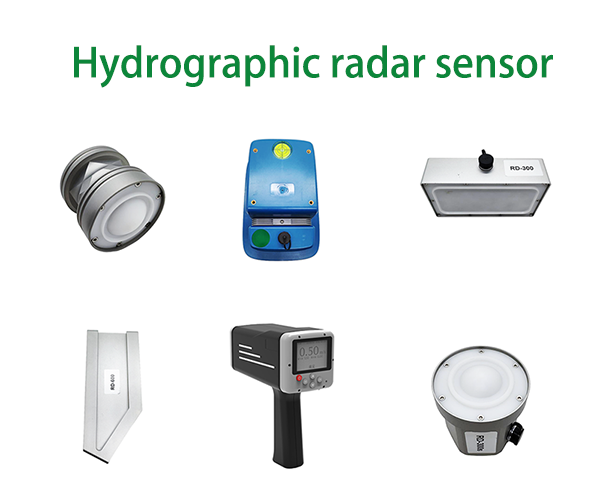[Jūsų vardas]
Data: 2024 m. gruodžio 23 d.
[Vieta]— Didėjant klimato kaitai ir didėjant susirūpinimui dėl vandens išteklių valdymo, pažangių vandens lygio radarų technologijų diegimas keičia atvirų vagų upių stebėjimo ir valdymo būdus. Šis novatoriškas metodas, naudojant radarų srauto greičio matavimą, suteikia precedento neturintį tikslumą stebint vandens lygį ir srauto greitį upėse ir upeliuose, teikiant svarbius duomenis aplinkos valdymui ir bendruomenės saugumui.
Patobulintos stebėjimo galimybės
Atvirų kanalų upės yra jautrios vandens lygio svyravimams dėl tokių veiksnių kaip krituliai, sniego tirpsmas ir žmogaus veikla. Tradiciniai vandens lygio stebėjimo metodai dažnai apima rankines matavimo stotis, kurios gali būti daug darbo reikalaujančios ir paveiktos žmogiškųjų klaidų. Priešingai, vandens lygio radarų technologija naudoja bekontakčius jutiklius, kurie skleidžia radaro signalus, kad matuotų atstumą tarp jutiklio ir vandens paviršiaus. Šis metodas teikia didelio tikslumo duomenis realiuoju laiku, net ir sudėtingomis oro sąlygomis.
„Radaro technologijos integravimas leidžia mums nuolat stebėti upių sąlygas be tradicinių metodų apribojimų.“aiškina dr. Sophie Becker, hidrologė iš Nacionalinio vandens mokslo instituto.„Tai labai svarbu norint suprasti srauto dinamiką ir prognozuoti galimus potvynius.“
Taikymas potvynių valdyme
Vienas reikšmingiausių radaro srauto greičio matavimo privalumų yra jo taikymas potvynių valdyme. Kadangi dėl klimato kaitos padažnėja ekstremalūs oro reiškiniai, tikslūs vandens lygio ir srauto greičio duomenys yra būtini norint numatyti potvynių riziką ir sušvelninti jų poveikį bendruomenėms.
Naujausiuose bandymuose Ronos upės baseine mokslininkai įdiegė radarų jutiklių tinklą, kuris teikė realaus laiko duomenis apie vandens lygį ir tėkmės greitį.„Galėjome greitai reaguoti į kylantį vandens lygį, laiku įspėdami vietos gyventojus.“sakė Ronos potvynių prevencijos tarnybos direktorius Jean-Claude Dupuis.„Ši technologija gali išgelbėti gyvybes ir sumažinti turtinę žalą.“
Aplinkos monitoringas ir ekosistemų sveikata
Be potvynių valdymo, radarų technologijų taikymas atlieka svarbų vaidmenį aplinkos stebėsenoje. Srauto greičio ir vandens lygio supratimas gali suteikti įžvalgų apie upių ekosistemas, padėdamas tyrėjams įvertinti vandens gyvūnų buveinių sąlygas.
Pavyzdžiui, vandens srauto pokyčiai gali paveikti nuosėdų pernašą ir maistinių medžiagų apytaką, kurie yra gyvybiškai svarbūs sveikoms upių ekosistemoms palaikyti.„Naudodamiesi šiais duomenimis, galime įgyvendinti veiksmingesnes gamtosaugos strategijas, skirtas apsaugoti biologinę įvairovę mūsų upėse.“pažymėjo dr. Beckeris. Tai ypač svarbu žuvininkystei ir kitoms pramonės šakoms, kurios priklauso nuo sveikų vandens ekosistemų.
Iššūkiai ir svarstymai
Nors vandens lygio radarų technologijos privalumai akivaizdūs, platus diegimas susiduria su iššūkiais. Pradinės radarų sistemų įrengimo išlaidos gali būti didelės, todėl kai kurios savivaldybės gali atsisakyti diegti šią technologiją. Be to, reikia tinkamai apmokyti darbuotojus, kad jie galėtų interpretuoti duomenis ir integruoti juos į esamas vandens valdymo sistemas.
„Finansavimas ir mokymai yra pagrindiniai komponentai, užtikrinantys, kad visi regionai galėtų pasinaudoti šia technologija.“pabrėžia Dupuis.„Būs būtinas bendradarbiavimas tarp vyriausybinių agentūrų, mokslinių tyrimų įstaigų ir vietos bendruomenių.“
„Tikslas – sukurti visapusišką stebėsenos tinklą, kuris teiktų aktyvius mūsų upių valdymo sprendimus.“Dr. Becker paaiškina.„Turėdami tikslius duomenis, galime priimti pagrįstus sprendimus, kurie ne tik apsaugotų bendruomenes, bet ir išsaugotų gyvybiškai svarbias upių ekosistemas.“
Kadangi atvirų kanalų upės visame pasaulyje susiduria su vis didėjančiu klimato kaitos, žmogaus veiklos ir gyventojų skaičiaus augimo spaudimu, novatoriškų technologijų, tokių kaip vandens lygio radarų srauto greičio matavimas, diegimas gali būti raktas į tvarų vandens valdymą. Nuolat investuojant ir bendradarbiaujant, ši pažanga žada apsaugoti mūsų vandens išteklius ateities kartoms.
Įrašo laikas: 2024 m. gruodžio 24 d.


